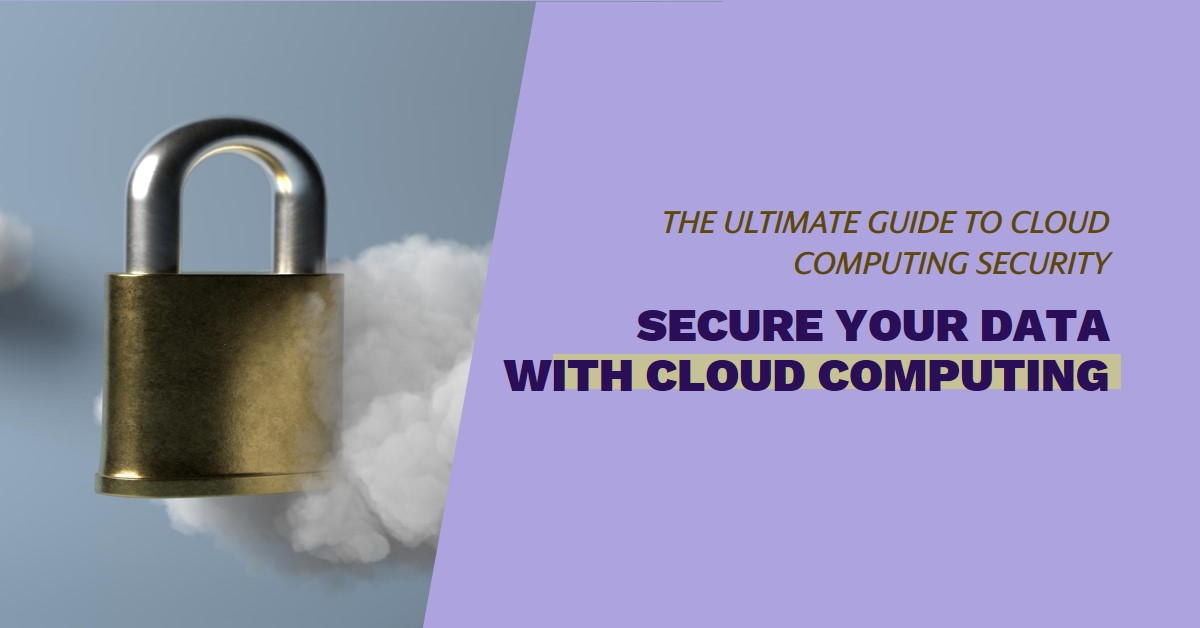Cloud Computing Security Best Practices: Protecting Your Data in the Digital Age
In today’s digital landscape, where data is the lifeblood of businesses, the adoption of cloud computing has surged exponentially. Cloud computing offers unparalleled flexibility, scalability, and cost-efficiency, revolutionizing organizations’ operations. However, with this increased reliance on cloud services comes a pressing concern: security. As businesses entrust their sensitive data to third-party cloud providers, ensuring robust cloud computing security practices is paramount. In this comprehensive guide, we delve into the intricacies of cloud computing security, exploring best practices, key challenges, and cutting-edge solutions to safeguard your data effectively.
Understanding Cloud Computing Security
Cloud computing security encompasses a range of measures designed to protect data, applications, and infrastructure hosted in the cloud environment. At its core, cloud security aims to mitigate risks associated with data breaches, unauthorized access, and other cyber threats. Traditional security measures, such as firewalls and intrusion detection systems, are no longer sufficient in the dynamic landscape of cloud computing. Instead, a holistic approach integrating technology, processes, and personnel is essential to address emerging threats effectively.
One of the fundamental principles of cloud computing security is shared responsibility. In the cloud model, security responsibility is divided between the cloud service provider (CSP) and the customer. While CSPs are responsible for securing the underlying infrastructure and ensuring compliance with industry standards, customers are tasked with protecting their data, configuring access controls, and implementing additional security measures. This shared responsibility model underscores the importance of collaboration between cloud providers and customers to create a robust security posture.
Key Challenges in Cloud Computing Security
Despite the numerous benefits of cloud computing, security concerns remain a significant barrier to adoption for many organizations. Several vital challenges contribute to the complexity of cloud security:
- Data Breaches: The proliferation of sensitive data stored in the cloud has made it a lucrative target for cybercriminals. Data breaches can result in severe financial and reputational damage for organizations, highlighting the importance of robust security measures.
- Compliance Requirements: Regulatory compliance is critical for businesses operating in highly regulated industries such as healthcare, finance, and government. Navigating the complex landscape of compliance requirements in the cloud requires careful planning and implementation of appropriate security controls.
- Identity and Access Management (IAM): Managing user identities and controlling access to cloud resources is essential for preventing unauthorized access and insider threats. IAM solutions help organizations enforce least privilege principles and ensure only authorized users can access sensitive data.
- Data Encryption: Encrypting data both in transit and at rest is essential for protecting it from unauthorized access. Robust encryption algorithms and critical management practices are necessary to maintain the confidentiality and integrity of data stored in the cloud.
Best Practices for Cloud Computing Security
Organizations must adopt a proactive approach to security to address these challenges and mitigate the risks associated with cloud computing. Implementing the following best practices can help enhance the security posture of cloud environments:
- Perform Regular Security Assessments: Regular security assessments and audits are essential for identifying vulnerabilities and assessing the effectiveness of existing security controls. Organizations should leverage automated tools and manual testing techniques to continuously evaluate the security posture of their cloud infrastructure.
- Implement Multi-Factor Authentication (MFA): MFA adds an extra layer of security by requiring users to provide multiple forms of verification before accessing cloud resources. By combining something the user knows (e.g., a password) with something they have (e.g., a mobile device), MFA helps prevent unauthorized access even if credentials are compromised.
- Enforce Strong Access Controls: Implementing granular access controls based on the principle of least privilege helps minimize the risk of unauthorized access to sensitive data. Organizations should regularly review and update access permissions to ensure only authorized users can access critical resources.
- Encrypt Data End-to-End: Encrypting data throughout its lifecycle, from creation to storage and transmission, helps protect it from interception and unauthorized access. Utilize robust encryption algorithms and ensure that encryption keys are managed securely to prevent data breaches.
- Monitor and Analyze Cloud Activity: Implementing robust logging and monitoring capabilities allows organizations to promptly detect and respond to security incidents. By analysing cloud activity logs and leveraging threat intelligence, organizations can identify suspicious behaviour and take appropriate remedial action.
Conclusion
In conclusion, cloud computing offers unparalleled scalability, flexibility, and cost-efficiency but presents unique security challenges. By understanding the principles of cloud computing security and adopting best practices, organizations can mitigate risks effectively and protect their data in the digital age. From implementing robust access controls to leveraging advanced encryption techniques, proactive security measures are essential for maintaining a secure and compliant cloud environment. By embracing a shared responsibility model and collaborating closely with cloud service providers, organizations can build a strong foundation for cloud computing security and ensure the integrity and confidentiality of their data.

















